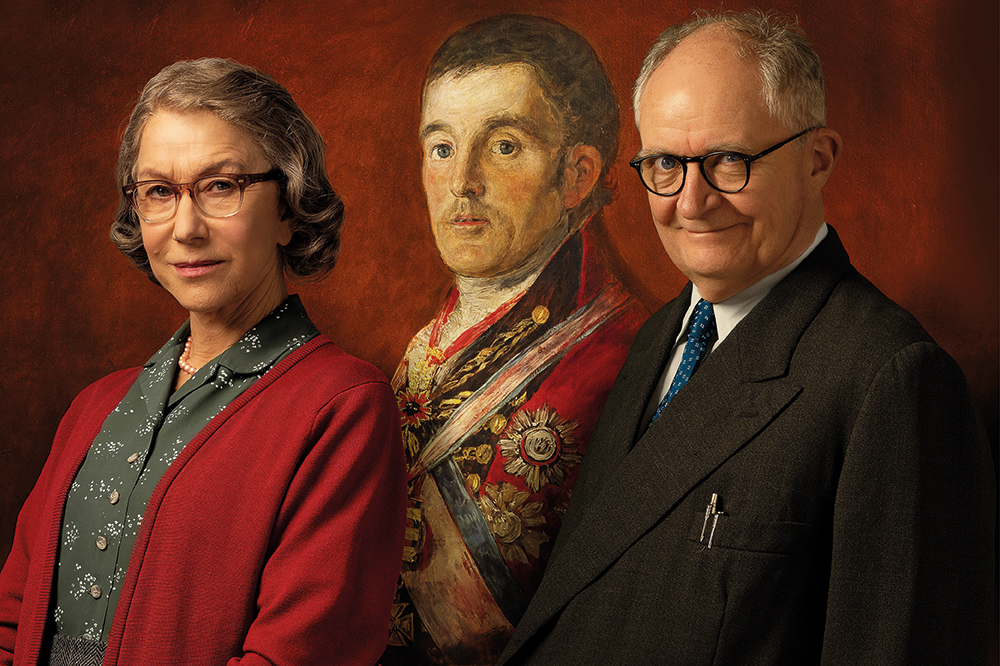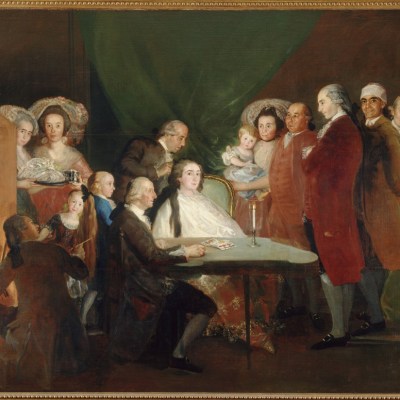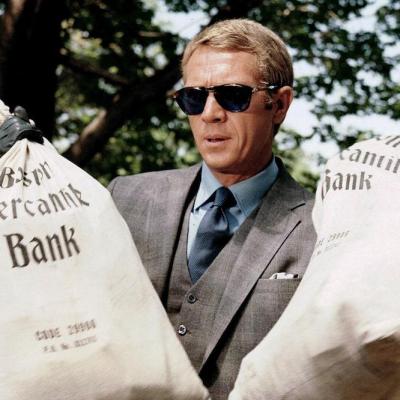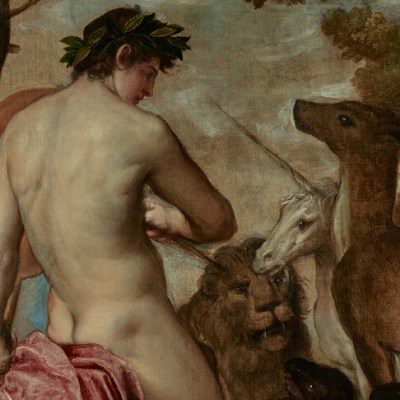‘It’s not very good, is it?’ Up in his spare bedroom in Newcastle, retired bus driver Kempton Bunton (Jim Broadbent) has just unwrapped Goya’s portrait of the Duke of Wellington. How it got there, how it gets back to the National Gallery in London, and the subsequent fall-out, is broadly the subject of Roger Michell’s film The Duke, which is based on real events from six decades ago. The theft of the Goya from the gallery in 1961 caused a sensation. The painting was even given a cameo in Dr No the following year, while it was still missing. ‘So that’s where it went,’ remarks Sean Connery as he walks past the canvas in Dr No’s lair. As everyone believed – and as the authorities became keener to emphasise the longer the painting was missing – this heist could only have been managed by some criminal mastermind.
In reality, a man from Newcastle slipped through an open loo window in the middle of the night and simply left the way he had come, with the painting under his arm. Bunton, who we see in the dock at the Old Bailey in the film’s opening scenes, is a pipe-smoking, self-educated man in his sixties. He and his long-suffering wife, Dorothy (Helen Mirren), badly need some extra cash to supplement the wages she makes cleaning for the local councillor and his wife (Anna Maxwell-Martin), but Bunton can’t hold down a job: he gets sacked driving for a taxi firm for letting a war veteran off part of his fare and generally being too chatty with customers, and loses his next gig at a bread factory for taking a stand against a racist manager. An aspiring playwright, he prefers Chekhov to Shakespeare because ‘the bard is over fond of his kings’, and reads Orwell’s Coming Up for Air in bed.
He is also a man obsessed by television. More specifically – as announced by signs scrawled on to bits of cardboard around the house, and even attached to his hat – by the idea of free television licences for the elderly; he occupies many of his spare hours campaigning for the issue on the damp streets of Newcastle. Bunton refuses to pay the licence on principle, so that when the dreaded inspectors’ van pulls up outside the front door, he can airily call out: ‘Gentlemen, join me – Robin Hood after the adverts.’ He has modified his TV set so that it can’t receive the BBC signal, so he doesn’t need a licence, he insists; ITV is paid for by the ads. ‘This is no mistake, it is a political act,’ he tells the intruders in his sitting room. ‘It’s an unfair tax on ordinary people, especially oldies that can’t afford it. Television, gentlemen, is the modern cure for loneliness.’ The gentlemen aren’t buying it, of course, and Bunton gets 13 days in ‘porridge’.
It is television that has brought Bunton news of the fact that Goya’s painting – started in Madrid in 1812 after Wellington was fresh (or, to look at the portrait, not so fresh) from a victory in the Peninsula War – has been wrested away from the New York collector Charles Wrightsman, who paid £140,000 for it at auction, and acquired for the nation for the same sum. The work is now something of a bête noir for Bunton and his pet cause. ‘Not the duke of bloody Wellington,’ he moans as another news bulletin shows it on display at the National Gallery. ‘Think of what they could have done with that money – given thousands of free TV licences to war widows and pensioners!’
And so the seed is planted – in the viewers’ minds at least – for this Geordie Robin Hood to plan a sting. Cue Thomas Crown Affair-style split-screen montages and mysterious xylophone notes as Bunton heads to London, where he inevitably ends up in Trafalgar Square, glowering at the National Gallery; though not before he’s harangued a few officials at the BBC, Fleet Street and Westminster, where he’s invariably given short shrift. (At the BBC he’s told the executive he’s asking for isn’t in – he’s gone to Granada. ‘Granada Television?’ asks the one-track-minded Bunton. ‘Granada Spain’, comes the irritable reply.)
The theft sequence itself is relatively short, and the film is careful not to reveal the identity of the thief, allowing for something of a twist towards the end of the movie. Once Bunton has the painting stashed in a wardrobe back home, he sends ransom notes, promising to return the painting safely once £140,000 is put towards his licence-fee cause. These purple-prose notes give the scriptwriters some fun: ‘The man’s a bloody poet!’ says the home secretary on reading one. ‘Perhaps we can lock WH Auden up at last.’
Jim Broadbent playing Kempton Bunton in The Duke. Courtesy Pathe UK

The film itself must do what Bunton’s defending barrister, Jeremy Hutchinson, needed to do to win over the jury: that is, persuade us of Bunton’s innate, if eccentric, goodness. (Hutchinson, here played by Matthew Goode, had recently been on the defence team for the Lady Chatterley trial, so had form when it came to underdog cases.) This it has no trouble doing: from the off we’re rooting for Broadbent’s unlikely hero, buying into his People vs the Establishment creed, even when it’s a touch rhetorical (‘When have you paid any tax?’ teases Dorothy midway through a rant about the government spending ‘our hard-earned money on a half-baked portrait’), or even misinformed (Bunton was fixated on the £140,000 sum paid for the painting, but in fact the government had to stump up only £40,000; the remainder was paid by the Wolfson Foundation). We smile indulgently at his attempts to keep the stolen painting hidden from Dorothy – he and his son are more terrified of ‘mam’ than they are of the police, and Bunton is forever trying to placate her with cups of tea and biscuits (‘Good dunkers, those Ginger Nuts…’).
What the film also does, rather mischievously, is to suggest that the painting doesn’t merit all the fuss anyway. ‘Was it really worth it?’ one journalist asks at the press conference to announce its acquisition, echoing Bunton’s sentiments. The response of Sir Philip Hendy (Andrew Havill), director of the gallery at the time, is not meant to sound convincing.
The Duke was originally slated for release in 2021 – exactly 60 years after the painting’s theft – but the release date was pushed back to allow for cinemas to build up their viewer numbers post-Covid. The question of how public museums and their acquisitions should be financed isn’t exactly a new issue, and nor is that of the BBC’s funding structure. But in delaying the movie’s release, the film-makers could hardly have predicted just how topical their protagonist’s war against the TV licence would feel. In Kempton Bunton we have a character who represents the complex relationship so many people have with the BBC: here is a man who reveres the broadcaster – who submits TV plays he has written in the hope it will produce them – and would, you suspect, be devastated to see it fail; yet who feels that the licence fee is not a fair payment system. What Bunton would make of the culture secretary proclaiming an end to the licence fee in a bid to distract attention from a prime minister breaking rules that ordinary folk suffered much to adhere to – well, that would be another story; but surely not as enjoyable as this one.
The Duke is released in cinemas in the UK on 25 February.



